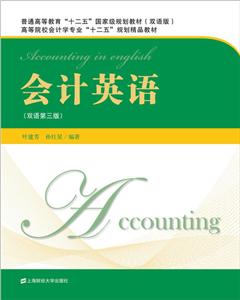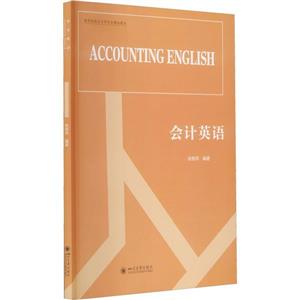
作者:叶建芳,孙红星编著
页数:311
出版社:上海财经大学出版社
出版日期:2015
ISBN:9787564221515
电子书格式:pdf/epub/txt
内容简介
本书介绍了会计英语的相关知识。其中, 第一至第三章是对会计的性质以及会计信息产生过程的叙述 ; 第四至第八章是关于资产、负债和所有者权益的确认、计量和报告 ; 第九章是关于有关企业经营活动对现金流量表的影响, 以及如何编制现金流量表。
目录
1 An Introduction to Accounting 1.1 Accounting is an Information System 1.2 Forms of Organization 1.3 The Framework for the Preparation and Presentation of FinancialStatements 1.4 Understanding of Financial Statements Balance Sheet Income Statement (Statement of Financial Performance) Statement of Owner’s Equity Statement of Cash Flows 1.5 Accounting and its Profession 1.6 Accounting Elements and Using the Accounting Equation What is Accounting Equation Effects of Transactions on the Accounting Equation 1.7 Ethics in Accounting Some Basic Ethical Standards Vocabulary Self-Test Questions Discussion Questions Exercises Problems 2 Recording Transactions 2.1 Economic Events and Business Documents 2.2 T Accounts and Debit & Credit Types of Accounts Chart of Accounts and Ledger The Accounting Equation and the Rules of Debits and Credits Normal Balances 2.3 Journalizing and Posting Transactions Journalizing Transactions Posting Transactions 2.4 Preparing a Trial Balance Trial Balance Locating and Correcting Errors Formatting Conventions 2.5 Using the Information-the Debt Ratio Vocabulary Self-Test Questions Discussion Questions Exercises Problems
3 Adjusting the Accounts, Preparing the Statements, and Completing the Accounting Cycle 3.1 The Need for Adjustments Time Period Principle Need for Adjustments at the End of an Accounting Period Accrual and Cash Basis of Accounting 3.2 Adjusting the Accounts Prepaid Expenses Depreciation Unearned Revenues Accrued Expenses Accrued Revenues 3.3 Adjusted Trial Balance and Preparation of Financial Statements 3.4 Using the Worksheet Purpose of the Worksheet Preparing Worksheets 3.5 Closing Entries Purpose of Closing Entries Preparing the Closing Entries 3.6 Post-closing Trial Balance 3.7 Classification of Balance Sheet Items Assets Liabilities Owner’s Equity 3.8 Using the Information-the Current Ratio Vocabulary Self-Test Questions Discussion Questions Exercises Problems
4 Accounting for Merchandising Enterprises 4.1 Service Enterprise versus Merchandising Concern Service Enterprise Merchandising Enterprise Periodic and Perpetual Inventory Systems 4.2 Purchase, Sales Revenue and Cost of Goods Sold Merchandise Purchases-Perpetual Inventory System Purchase Returns and Allowances Trade Discounts Purchase Discounts Transportation Costs Revenue from Sales and Cost of Goods Sold-Perpetual Inventory System Sales Returns and Allowances Sales Discounts Shrinkage Summary of Merchandising Cost Flows 4.3 Multiple
3 Adjusting the Accounts, Preparing the Statements, and Completing the Accounting Cycle 3.1 The Need for Adjustments Time Period Principle Need for Adjustments at the End of an Accounting Period Accrual and Cash Basis of Accounting 3.2 Adjusting the Accounts Prepaid Expenses Depreciation Unearned Revenues Accrued Expenses Accrued Revenues 3.3 Adjusted Trial Balance and Preparation of Financial Statements 3.4 Using the Worksheet Purpose of the Worksheet Preparing Worksheets 3.5 Closing Entries Purpose of Closing Entries Preparing the Closing Entries 3.6 Post-closing Trial Balance 3.7 Classification of Balance Sheet Items Assets Liabilities Owner’s Equity 3.8 Using the Information-the Current Ratio Vocabulary Self-Test Questions Discussion Questions Exercises Problems
4 Accounting for Merchandising Enterprises 4.1 Service Enterprise versus Merchandising Concern Service Enterprise Merchandising Enterprise Periodic and Perpetual Inventory Systems 4.2 Purchase, Sales Revenue and Cost of Goods Sold Merchandise Purchases-Perpetual Inventory System Purchase Returns and Allowances Trade Discounts Purchase Discounts Transportation Costs Revenue from Sales and Cost of Goods Sold-Perpetual Inventory System Sales Returns and Allowances Sales Discounts Shrinkage Summary of Merchandising Cost Flows 4.3 Multiple














